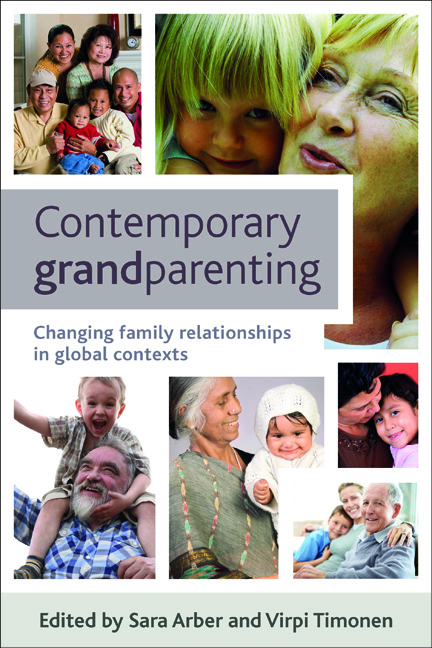ten - Understanding adolescent grandchildren’s influence on their grandparents
Published online by Cambridge University Press: 01 September 2022
Summary
Grandparent–grandchild relationships have been studied in the social sciences for over 50 years, with traditional perspectives emphasising the importance of grandparents as agents of socialisation for grandchildren (Neugarten and Weinstein, 1964; Denham and Smith, 1989). Most studies have adopted the grandparents’ perspective while neglecting the grandchild's viewpoint (Dellmann-Jenkins et al, 1987; Attar-Schwartz et al, 2009). Research has demonstrated that grandparents are a key element in grandchildren's socialisation by transmitting to them core values, by representing a role model and through companionship (Robertson, 1976; Denham and Smith, 1989). Nonetheless socialisation is not limited to childhood but occurs throughout the life course (Putney and Bengtson, 2002) and influences are mutual between parties within interactions (Tomlin, 1998; Putney and Bengtson, 2002). Both grandparent and grandchild have the potential to transmit knowledge to and influence each other.
Given recent rapid changes in social norms, knowledge and technology, we assume that the younger generation can provide a ‘linkage’ with new developments. Grandchildren can contribute to their grandparents’ integration by socialising them into new ideas and practices, by providing support and by enhancing social engagement. Previous research (Neugarten and Weinstein, 1964; Cherlin and Furstenberg, 1985; Franks et al, 1993) has shown that grandparents can take on diverse styles of grandparenting and exert greater or lesser influence on their grandchildren (for example, on religiosity). We also propose that a grandchild can undertake different roles while interacting with their grandparent and that the youngster's influence will vary in nature and intensity according to the characteristics of the grandparent–grandchild relationship.
This chapter focuses on the connection between non-adjacent generations and therefore needs to be seen within the broader family dynamics. The parent–grandparent tie affects the grandparent–grandchild relationship (Robertson, 1976; Monserud, 2008; Doyle et al, 2010, also see Chapter Eleven). However, given increasing life spans in western countries, long-lasting intergenerational relationships across three and even four generations are now a frequent and relevant phenomenon (Harper, 2005; Hoff, 2007). The possibilities of long-term connections between grandchildren and grandparents are greater than ever and family ties other than those established within nuclear households are assuming greater importance (Bengtson, 2001). A key issue is whether contemporary relationships between grandparents and adolescent grandchildren can become more direct, and less mediated by the parent generation.
- Type
- Chapter
- Information
- Contemporary GrandparentingChanging Family Relationships in Global Contexts, pp. 203 - 224Publisher: Bristol University PressPrint publication year: 2012



